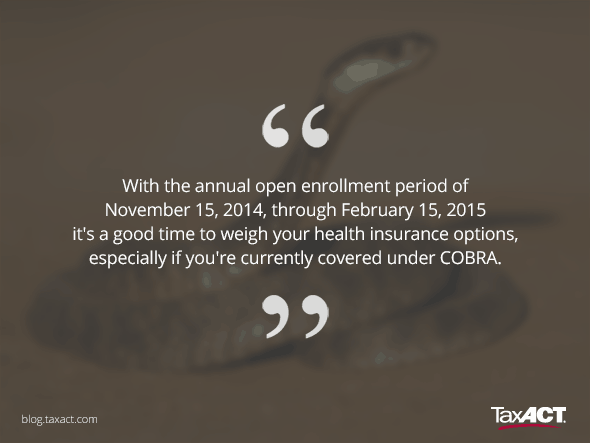Read before letting your Autorenew ACA plan for 2015

If you are enrolled in a health insurance plan you have purchased through exchanges affordable care Act (or markets), your plan is set to autorenew this fall. You do not have to do anything extra to keep your policy in effect for 2015.
This is the good news.
The bad news is that if you do not look your policy and make sure all the information is always correct, and you still get the best deal for your money, you may be sorry later
the questions you need to answer before your policy renews .:

is that your income has changed?
If your household income has increased since you registered, you can not qualify for the same amount of tax credit advanced premium - if you are still eligible for all
IRS will not know that you make more money right away, so if you report. change in your market, the amount of your credit will not change.
When you file your tax return, unfortunately, you could be in for a shock.
IRS will compare the amount you said you will do to the year with the amount you actually did.
If the amount of credit you have actually qualified for turns out to be less than what you received, you must pay at tax time.
This could be a significant amount of money, depending on your situation.
Have your health care needs or other circumstances changed?
Whatever the time of year, you must report significant life changes such as marriage or divorce, having a baby, moving, becoming disabled or losing their disability status, become pregnant events, or others for your state market.
If your life changed since you signed up for a plan, the next enrollment period (Nov. 15-15 February 2015) is your chance to make changes.
For example, if you or a family member has new medical problems, you may want to buy another plan with higher monthly premiums, but offer medical coverage.
on the other hand, you may not have to consult the doctor or emergency rooms in 2014, and you decided to take your chances with a cheaper policy.
Does your premiums change?
The cost of health insurance premiums, like everything else, tends to rise with inflation.
2015, there may be additional increases that insurance companies adjust to the realities of the costs under the regulations of the ACA.
your insurance company will send you information in the fall of changes to your premiums and benefits. Be sure to read it.
Does your change of Advanced Premium tax credit amount?
The amount of your credit might change for several reasons.
In addition to changes in your household income, the amount of your credit may change due to a quirk in the ACA law called the "benchmark" rule.
the maximum amount of the advance premium tax credit is calculated on the basis of a so-called reference plane, the second lowest priced silver plan offered by the state of your market.
For example, if insurers in your area introduce a cheaper plan, which could mean having to pay more to keep your plan.
If you autorenew your 2014 plan and you have not experienced life changes, you will also renew the same grant you got last year.
to avoid getting the wrong subsidy and have to pay back later, ask your market for a review of your grant.
is that your plan is the best deal, or if you switch plans?
insurance plan that gave you the best coverage of health care for less money last year may not be the best deal again this year.
With all the changes in the market and competitive forces, insurers have changed many rate and benefits.
rates are not the only things that can change from year to year.
Before you autorenew your plan, make sure your doctor and other health care providers are still covered, and your prescription coverage has not changed.
When you compare plans, make sure to look at other plans offered by your current insurance company, plans offered by competing insurance companies in the exchange, and private plans apart from the exchange.
Remember, if you buy a private plan, you will not be eligible for premium tax credits or cost sharing reductions.
If you do not need or want to make changes, great! You do not have to do anything -. Your autorenew plane
Otherwise, your window to make changes to your plan is November 15 to February 15, 2015.
By going to market your state and compare prices and plans , you can ensure that you always get the best deal for you and your family
#YouGotThis
photo credit :. chrisschoenbohm
























